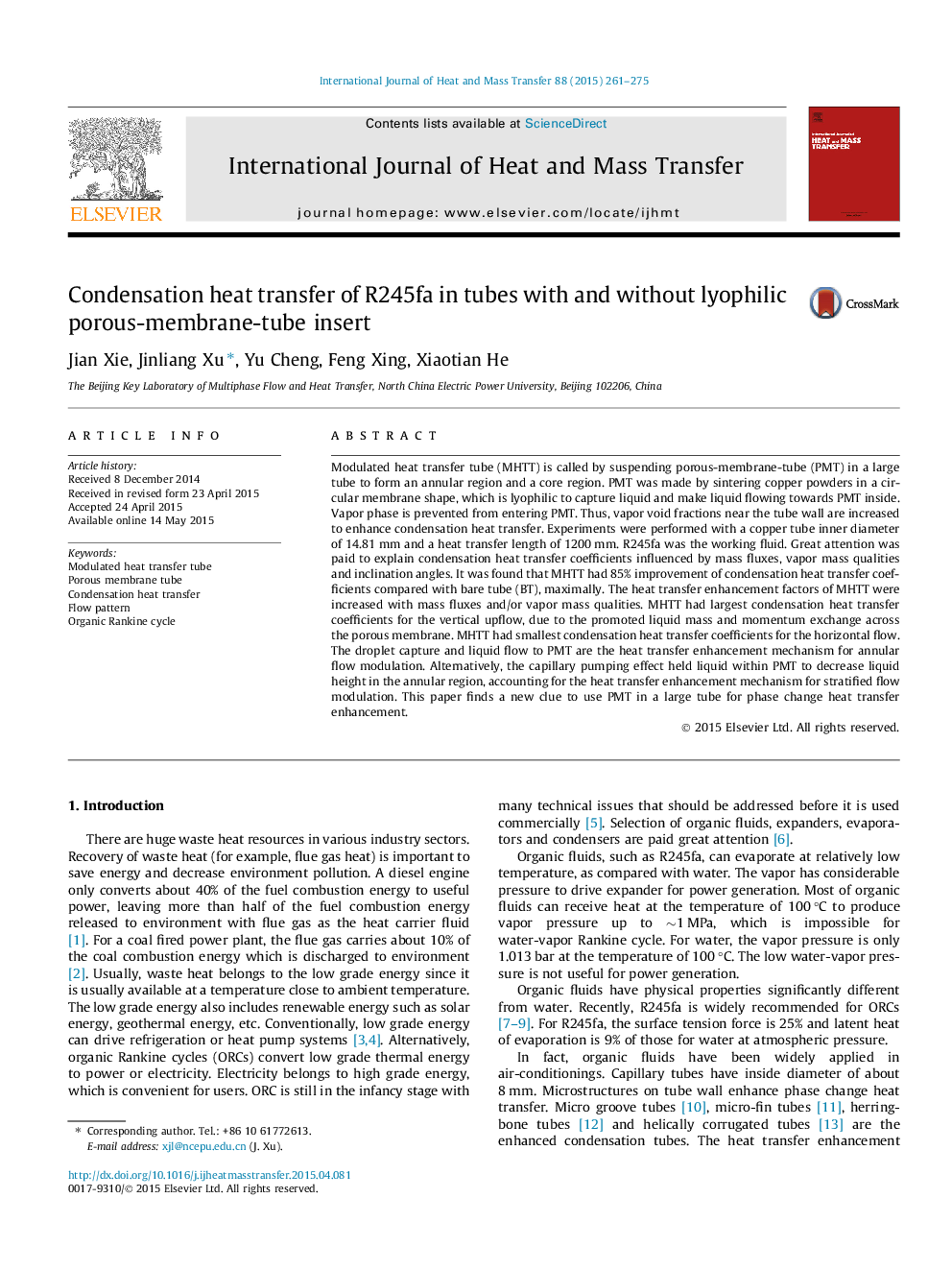| Article ID | Journal | Published Year | Pages | File Type |
|---|---|---|---|---|
| 657021 | International Journal of Heat and Mass Transfer | 2015 | 15 Pages |
Abstract
Modulated heat transfer tube (MHTT) is called by suspending porous-membrane-tube (PMT) in a large tube to form an annular region and a core region. PMT was made by sintering copper powders in a circular membrane shape, which is lyophilic to capture liquid and make liquid flowing towards PMT inside. Vapor phase is prevented from entering PMT. Thus, vapor void fractions near the tube wall are increased to enhance condensation heat transfer. Experiments were performed with a copper tube inner diameter of 14.81Â mm and a heat transfer length of 1200Â mm. R245fa was the working fluid. Great attention was paid to explain condensation heat transfer coefficients influenced by mass fluxes, vapor mass qualities and inclination angles. It was found that MHTT had 85% improvement of condensation heat transfer coefficients compared with bare tube (BT), maximally. The heat transfer enhancement factors of MHTT were increased with mass fluxes and/or vapor mass qualities. MHTT had largest condensation heat transfer coefficients for the vertical upflow, due to the promoted liquid mass and momentum exchange across the porous membrane. MHTT had smallest condensation heat transfer coefficients for the horizontal flow. The droplet capture and liquid flow to PMT are the heat transfer enhancement mechanism for annular flow modulation. Alternatively, the capillary pumping effect held liquid within PMT to decrease liquid height in the annular region, accounting for the heat transfer enhancement mechanism for stratified flow modulation. This paper finds a new clue to use PMT in a large tube for phase change heat transfer enhancement.
Related Topics
Physical Sciences and Engineering
Chemical Engineering
Fluid Flow and Transfer Processes
Authors
Jian Xie, Jinliang Xu, Yu Cheng, Feng Xing, Xiaotian He,
